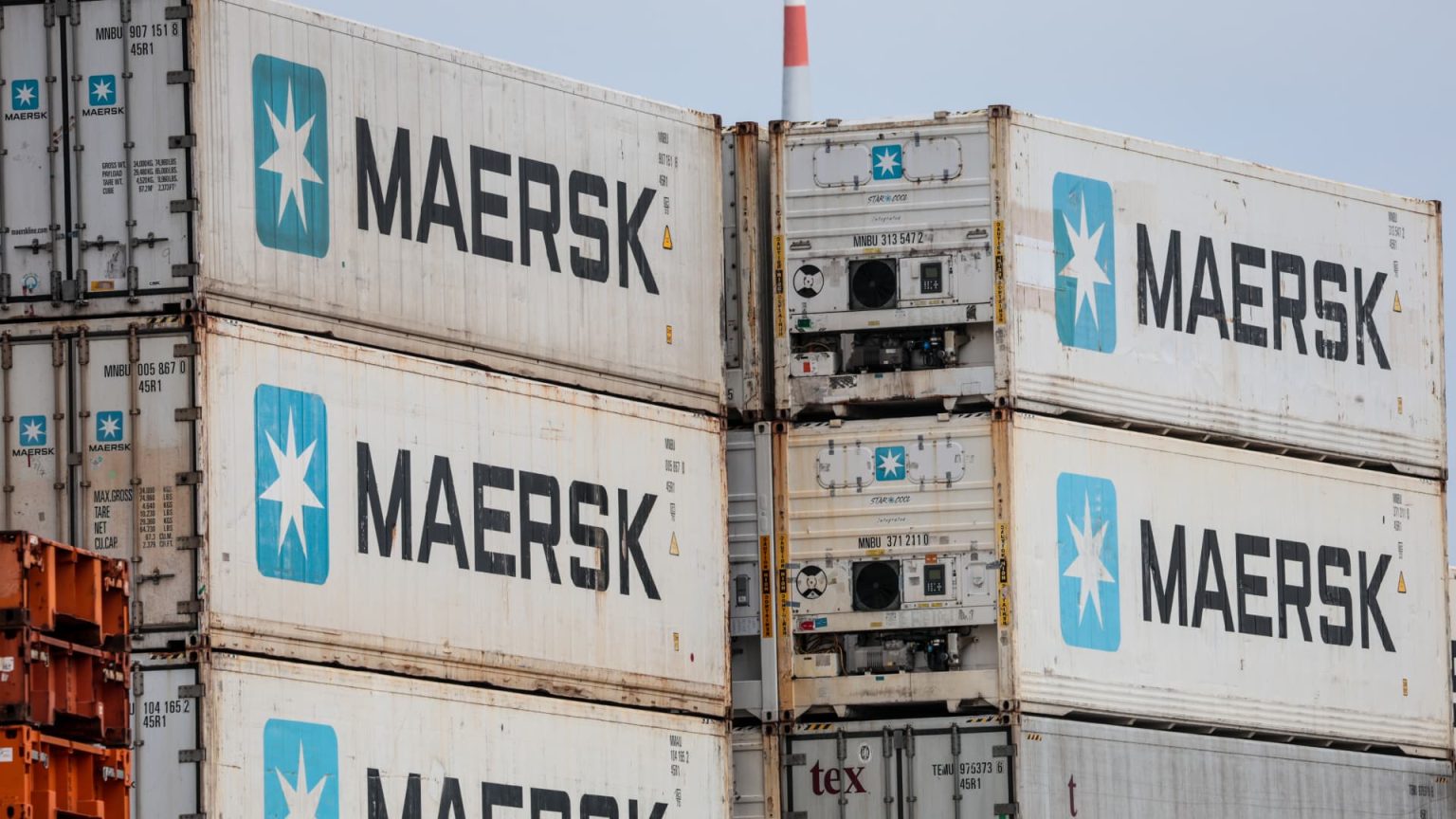Danish shipping giant Maersk reported a stronger-than-expected operating profit for the first quarter of 2025, highlighting robust demand despite ongoing challenges in the global container market due to high U.S.-China trade tariffs. Preliminary earnings before interest, tax, depreciation, and amortization (EBITDA) amounted to $2.71 billion, substantially exceeding expectations. However, the company warned that geopolitical uncertainties and tariff issues could limit container volume growth in the coming year.
| Article Subheadings |
|---|
| 1) Financial Performance Exceeds Expectations |
| 2) The Impact of U.S.-China Tariffs |
| 3) Market Volatility and Future Projections |
| 4) Ongoing Challenges in Global Shipping |
| 5) Outlook: What Lies Ahead for Maersk |
Financial Performance Exceeds Expectations
Maersk reported a preliminary EBITDA of $2.71 billion for the first three months of 2025, significantly higher than analysts’ expectations of $2.57 billion. This figure represents a remarkable increase of 70% from $1.59 billion during the same period in 2024. The surge in profits reflects a continuation of the robust demand that characterized the previous year, indicating that the shipping giant has effectively managed to capitalize on existing market conditions. Vincent Clerc, the company’s CEO, remarked on the solid demand in a recent interview, stating,
“The first quarter, actually, was a continuation of the very strong demand and very robust economy we had throughout last year.”
This performance sets a positive tone for Maersk, placing it in a strong position despite the backdrop of geopolitical tensions affecting global trade.
The Impact of U.S.-China Tariffs
The current trade environment, heavily influenced by U.S.-China tariffs, poses significant challenges for Maersk and the broader shipping industry. Following the imposition of 145% import duties on products from China by the Trump administration, trade between the two nations has noticeably declined. As a consequence, Clerc stated that the containers shipped between the U.S. and China have seen a staggering drop of 30% to 40% in volume for April 2025. Businesses have adopted a cautious approach to shipping in light of the tariff situation, resulting in a temporary stalemate in trade.
“Unless we find a solution there, then the current level of tariffs is simply prohibitive on both sides for it to really show some recovery,”
he added, emphasizing the urgent need for resolution to reinvigorate the container market.
Market Volatility and Future Projections
Despite the strong quarterly results, Maersk has adjusted its forecast for global container market growth in 2025, revising it downward to a range of -1% to 4%. Previously, the company anticipated growth of 4% for the year. This change reflects an acknowledgment of the “increased macroeconomic and geopolitical uncertainty” that is influencing global shipping patterns. According to Clerc, the freight market is expected to remain volatile, with fluctuations affecting operations and profitability. This volatility is likely to create challenges not only for Maersk but for other companies in the shipping sector as well, leading to potential ripple effects throughout the global economy.
Ongoing Challenges in Global Shipping
The shipping industry, grappling with high tariffs, is also facing disruptions in various trade lanes that could extend throughout the remainder of the year. The Red Sea area has been particularly cited as a hotspot for ongoing disruptions, impacting shipping schedules and costs. Clerc mentioned that while the China-U.S. trade relationship remains a critical issue, trade lanes involving other regions and countries are not yet significantly contaminated. This distinction provides a glimmer of hope for companies looking to diversify their trade routes. However, it underscores the necessity for a long-term solution to address the tariff-related restrictions that continue to plague the industry.
Outlook: What Lies Ahead for Maersk
Looking forward, Maersk has maintained its profit guidance for 2025, predicting earnings between $6 billion and $9 billion. The company is preparing for potential fluctuations and challenges that may arise as it navigates the complex landscape of international trade, suggesting that they are being proactive in addressing the repercussions of current events. The emphasis remains on maintaining a strong operational foundation while remaining responsive to market dynamics. As the situation evolves, Maersk’s adaptability and strategic decisions will be closely monitored by industry analysts and stakeholders alike.
| No. | Key Points |
|---|---|
| 1 | Maersk surpassed first-quarter profit expectations with $2.71 billion in EBITDA. |
| 2 | U.S.-China tariffs have significantly impacted container volumes. |
| 3 | Future growth projections for the container market have been revised downward. |
| 4 | The shipping industry is experiencing volatility due to continued geopolitical tensions. |
| 5 | Maersk is maintaining its profit guidance amid ongoing challenges. |
Summary
In conclusion, Maersk’s financial performance in the first quarter of 2025 showcases the company’s resilience amidst a challenging geopolitical landscape driven by U.S.-China trade tensions. While the immediate outlook remains uncertain with potential impacts on global container volumes, the company’s profit guidance suggests confidence in navigating future challenges. As the international shipping sector continues to evolve, Maersk’s strategic adaptations will be closely watched to gauge the broader implications for global trade.
Frequently Asked Questions
Question: What were Maersk’s first-quarter earnings?
Maersk reported preliminary earnings of $2.71 billion in EBITDA for the first quarter of 2025, significantly higher than analysts’ expectations.
Question: How have U.S.-China tariffs affected the shipping market?
U.S.-China trade tariffs have led to a drop in container volumes between the two countries by 30% to 40%, prompting a cautious approach from businesses.
Question: What is Maersk’s outlook for the global container market in 2025?
Maersk has revised its growth projections for the global container market for 2025 to a range of -1% to 4%, indicating concerns over geopolitical and economic uncertainties.


